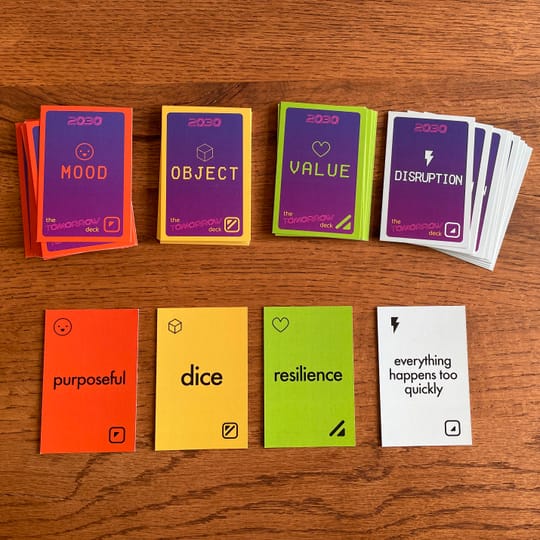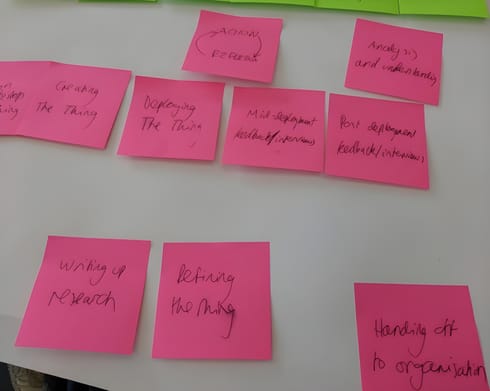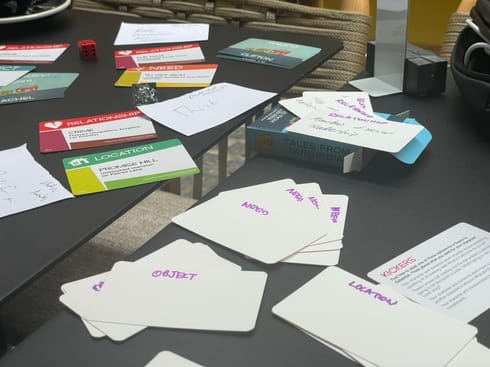
Introducing The Tomorrow Deck
We designed a deck of cards to help people think expansively and have creative discussions together.
We are always looking for opportunities to integrate games into our work. Last year, we designed and facilitated a workshop for a team that was experiencing some misalignment and friction. We wanted to start the workshop with something to ease them into discussions together. Because they were experiencing some tension, we wanted to give them something to work with that was familiar and that they all had in common to project onto to before entering into deeper discussion about their issues. So we designed a card deck we call The Tomorrow Deck.
We're big fans of ideation decks, which all work in roughly similar ways: there's a few different suits of cards, you pick a card from each suit and combine them all together to try to make something new. These decks (like MANIFESTO! and The Oracle for Transfeminist Technologies) work in a similar way, by using forced association or bisociation to bring together distinct ideas and create something new. We wanted to be able to use the best of all of these decks and games together, so our intention with The Tomorrow Deck was to create a deck with a shared language that we could add to over time. We could bring in ideas from existing decks, and we could develop content specific to the needs of our clients.

To create card content with familiar things, we wrote from two different vantage points. The first vantage point was around objects and ideas we assume are commonly known like bread, fairness and hope, some of which were taken from the client’s website and strategy documents. The second vantage point was around broadly common situations in context of the sectors they worked in (in this case, third sector and public sector) like budget cuts, deprioritisation of community engagement and expectations to work fast.
We started by gathering together every ideation deck we owned and looking for common patterns, to decide on the suits of our deck. We settled on four suits: value, object, mood, and disruption. The game we were developing was for group ideation where players are first dealt a value, object and mood card and prompted to create something from them: ‘How can you combine your value and object to create the mood?’ For example, how can you combine fairness with bread to create hope? Maybe you imagine a fair distribution of bread programme that gives people hope because everyone has regular access to nutrition. There are beautiful bread commons set up in communities where people gather and share food. With full bellies and convivial spaces, hope springs?
After giving people time to come up with as many ideas as they want, we hit them with a disruption card and a prompt: ‘How will you have to alter or change your ideas as a result of the disruption?' For example, if the disruption card says, ‘The most connected people take the largest share of resources’, how can we design the bread programme to mitigate, prevent or leverage the most connected people taking the largest shares?
In addition to the written content, we took time to consider the visual design. We started with colour coding the suits and then used ColorADD colour alphabet for folks who might be colour blind and for folks who prefer images or symbols to categorise information.
This type of play and imagining is not new. Putting random cards together to come up with new ideas is tried and true. We are people who have a lot of different card decks. When we were thinking about this design, we looked at what we had already, saw the similarities, honed in on what we loved and hacked some things together. We have created something we can use with our specific client groups and something we can build on as our work grows.



